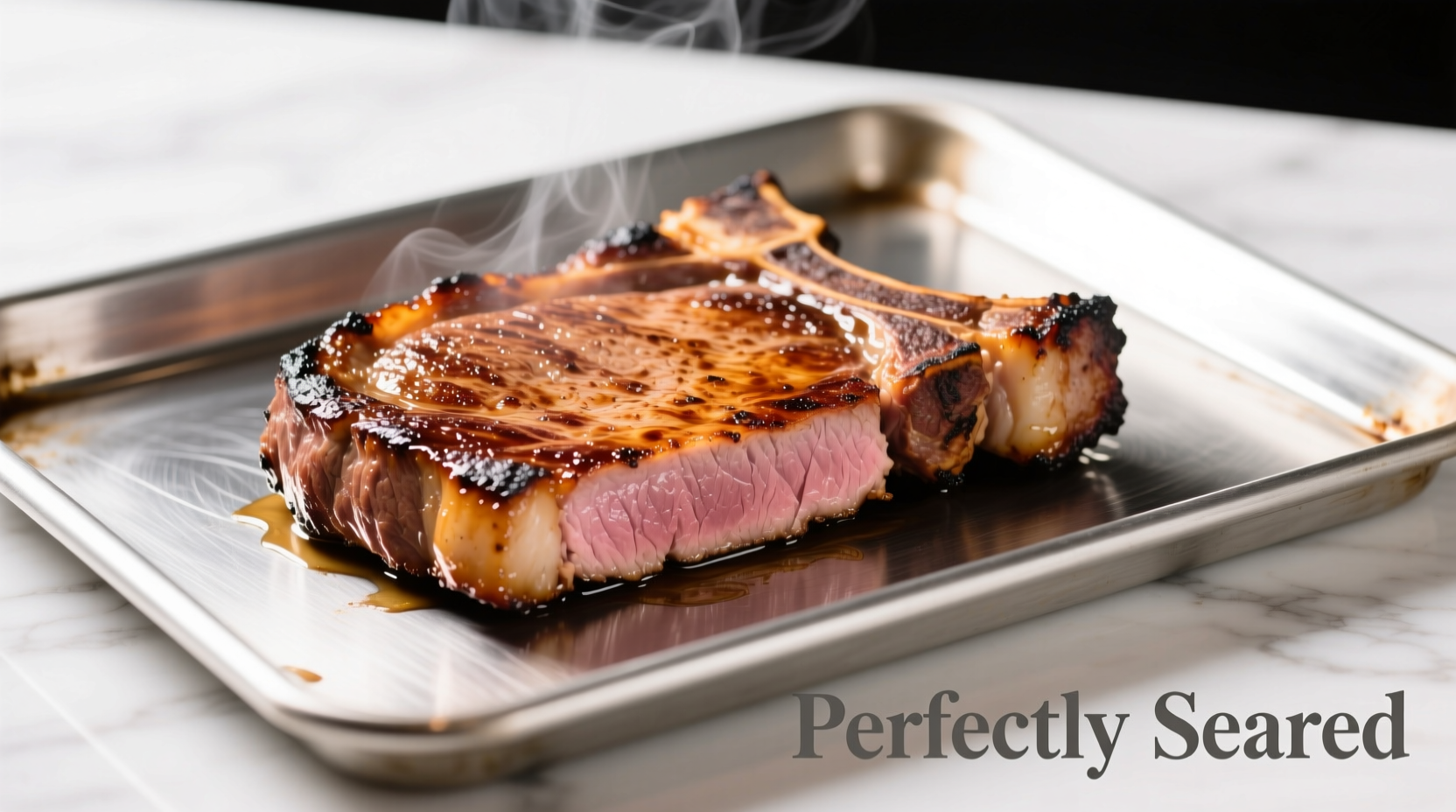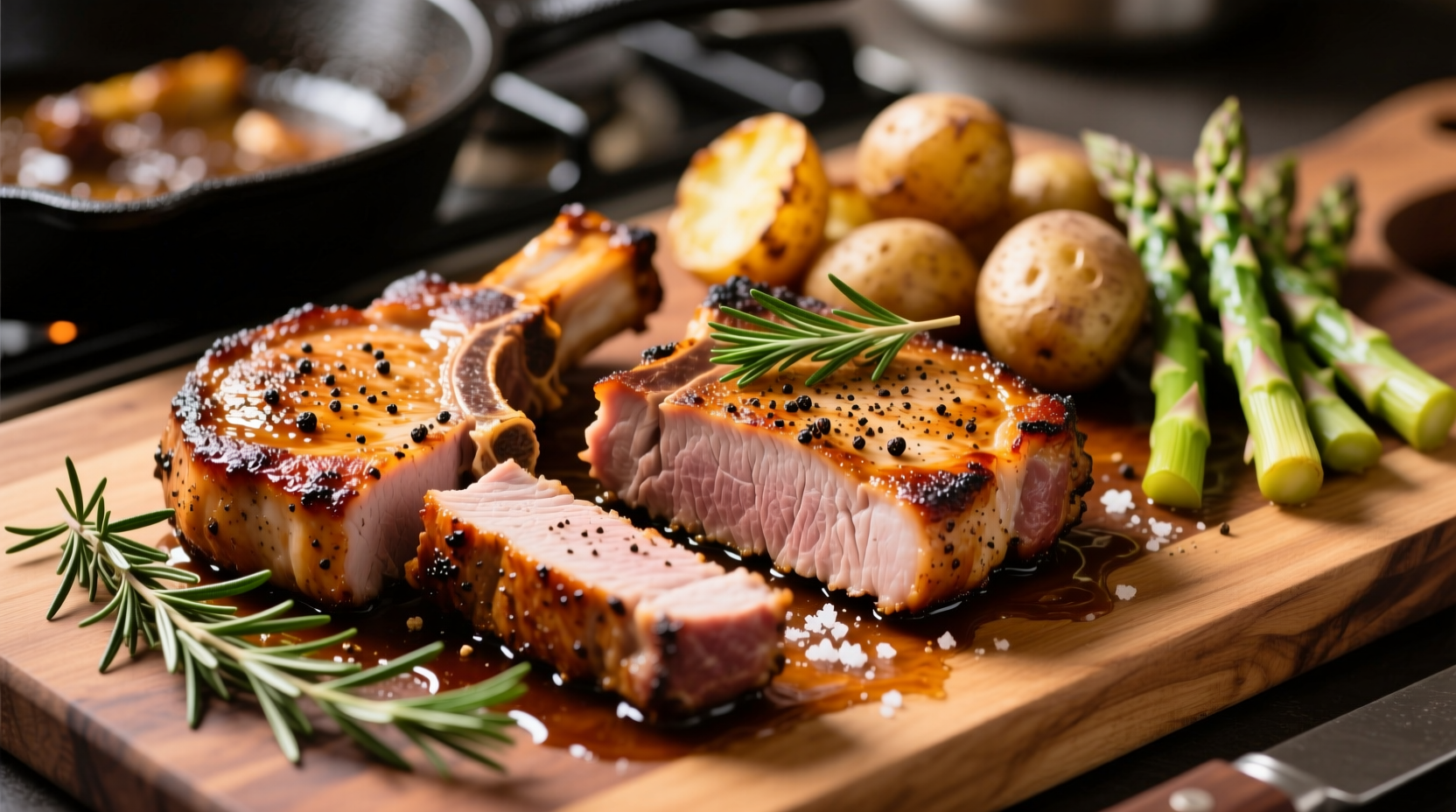Nothing beats the satisfaction of serving restaurant-quality pork steaks from your own kitchen. While many home cooks default to the stovetop or grill, the oven method delivers unparalleled consistency and juiciness—especially for thicker cuts. After decades of testing various techniques, I've perfected a foolproof approach that eliminates dry, overcooked pork forever.
Why Oven Cooking Outperforms Other Methods
The oven's gentle, enveloping heat solves the biggest challenge with pork steaks: uneven cooking. Unlike stovetop methods where intense direct heat often burns the exterior before the interior reaches proper temperature, the oven's ambient heat cooks steaks evenly from all sides. This method particularly shines with:
- Thicker cuts (1 inch/2.5 cm or more)
- Bone-in pork steaks like blade or sirloin
- When cooking multiple steaks simultaneously
Professional kitchens frequently combine searing with oven finishing—a technique called "oven-toasting"—to achieve the perfect crust without compromising interior moisture. This hybrid approach gives you maximum flavor development while maintaining precise temperature control.
Essential Preparation Steps for Success
Skipping proper preparation guarantees disappointing results. Follow these non-negotiable steps before heating your oven:
Selecting the Right Cut
Not all pork steaks behave the same in the oven. Your best options:
- Blade steaks (from shoulder): Rich marbling withstands oven heat beautifully
- Sirloin steaks: Leaner but cook evenly when not overcooked
- Loin chops: Best for thinner cuts under 1 inch
Temperature Equilibrium is Critical
Remove steaks from refrigeration 30-45 minutes before cooking. Cold meat straight from the fridge:
- Requires longer cooking time, increasing dryness risk
- Creates significant temperature gradient (raw center, overcooked exterior)
- Prevents proper searing (moisture evaporates before browning)
Seasoning Science
Apply kosher salt at least 15 minutes before cooking. This isn't just for flavor—the salt dissolves surface proteins, creating a protective barrier that retains moisture during cooking. For best results:
- Use 3/4 teaspoon kosher salt per pound of meat
- Add freshly ground black pepper just before searing
- Consider garlic powder or smoked paprika for additional flavor layers

The Foolproof Oven Cooking Method
Follow this professional technique for consistently perfect results:
Step 1: Preheat and Prepare
Preheat oven to 400°F (204°C). Position rack in the center of the oven. Line a rimmed baking sheet with aluminum foil and place an oven-safe wire rack on top. The rack elevates steaks, allowing hot air circulation for even cooking.
Step 2: Sear for Flavor Development
Heat 1 tablespoon oil in an oven-safe skillet over medium-high heat until shimmering (about 2 minutes). Pat steaks completely dry with paper towels—moisture prevents proper browning. Sear for 2-3 minutes per side until deep golden brown. This Maillard reaction creates complex flavor compounds essential for restaurant-quality results.
Step 3: Oven Finish with Precision
Transfer the entire skillet to the preheated oven. Roast for 8-12 minutes depending on thickness. Use an instant-read thermometer to monitor internal temperature—this is the only reliable method for perfect doneness.
| Thickness | Recommended Time | Target Temperature |
|---|---|---|
| 3/4 inch (2 cm) | 6-8 minutes | 140°F (60°C) |
| 1 inch (2.5 cm) | 8-10 minutes | 140°F (60°C) |
| 1.5 inches (3.8 cm) | 10-12 minutes | 140°F (60°C) |
Step 4: The Critical Resting Period
Transfer steaks to a cutting board and tent loosely with foil. Rest for 5 minutes minimum. During this time:
- Internal temperature rises 5-10°F (carryover cooking)
- Proteins relax, redistributing juices throughout the meat
- Final temperature reaches USDA's safe 145°F (63°C)
Food Safety Verification: USDA Guidelines
Understanding proper pork temperatures eliminates guesswork and ensures safety. The USDA Food Safety and Inspection Service updated guidelines in 2011, recognizing that previous recommendations were overly conservative:
| Previous Guideline | Current Guideline | Scientific Basis |
|---|---|---|
| 160°F (71°C) | 145°F (63°C) + 3 minute rest | Trichinella parasite dies at 137°F when held for 1 minute |
| Well-done only | Medium (slightly pink) | Modern pork is leaner and dries out at higher temperatures |
Source: USDA Food Safety and Inspection Service
Troubleshooting Common Problems
Even with careful execution, issues can arise. Here's how to solve them:
Dry or Tough Texture
Cause: Overcooking beyond 145°F internal temperature
Solution: Always use a thermometer; remember carryover cooking continues during resting
Insufficient Browning
Cause: Wet surface or insufficient pan heat
Solution: Pat steaks completely dry before searing; ensure oil shimmers before adding meat
Uneven Cooking
Cause: Temperature shock from cold to hot
Solution: Allow steaks to reach room temperature (30-45 minutes) before cooking
When Oven Cooking Isn't Ideal: Context Boundaries
While excellent for most situations, this method has limitations. Consider alternatives when:
- Thin cuts under 1/2 inch: Use stovetop only to prevent overcooking
- Outdoor cooking preferred: Grill provides superior char and smokiness
- Time constraints: Pressure cooker achieves tenderness faster for tougher cuts
- Specialty preparations: Sous vide offers ultimate precision for thick cuts
The oven method shines brightest with standard 1-1.5 inch thick pork steaks where consistent doneness throughout is the priority. For special occasions or thicker cuts, it's the professional's preferred technique.
Serving Suggestions for Maximum Enjoyment
Complement your perfectly cooked pork with these pairings:
- Classic combination: Applesauce and roasted Brussels sprouts
- Modern twist: Mango-avocado salsa with lime crema
- Comfort food pairing: Garlic mashed potatoes and green beans
- Wine pairing: Medium-bodied Pinot Noir or fruit-forward Zinfandel
For the best dining experience, slice pork steaks against the grain at a 45-degree angle. This shortens muscle fibers, creating a noticeably more tender bite regardless of cooking method.











 浙公网安备
33010002000092号
浙公网安备
33010002000092号 浙B2-20120091-4
浙B2-20120091-4